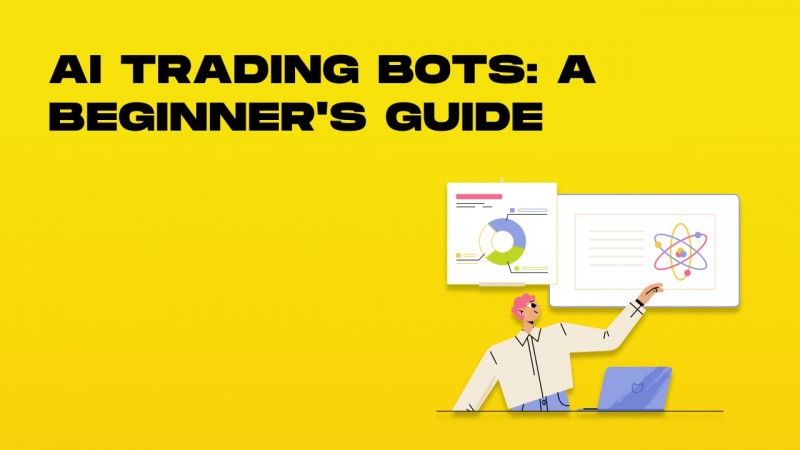Top 10 Ways To Evaluate The Integration And Compatibility Of Ai-Based Stock Predicting/Analyzing Trading Platforms
When you are evaluating AI trading platforms compatibility and integration are key elements. Platforms that integrate seamlessly with the existing workflows, tools, and systems can enhance productivity and efficiency. We've compiled our top 10 tips for assessing the compatibility and the integration of these platforms.
1. Check Brokerage Integration
Ensure that your platform integrates seamlessly with the trading or brokerage service you want.
Trade Execution: Verify whether the platform allows direct trade execution by the broker integrated.
Account synchronization: Check that the platform is able to update in real-time balances and positions of your account and transaction history.
2. Assessment of API availability
API access - Ensure that the platform includes an API to allow developers to create customized tools or automate workflow flows.
API documentation: Look to see if there are examples of how the API can be used.
Rate Limits: Check the API's rates limits to make sure that they are reasonable and can handle your anticipated use.
3. Examine the Third-Party Tool Integration
Popular tools: Make sure that the platform can be integrated with tools like Excel or Google Sheets.
Export and import of data: Make sure your platform supports easy export/import of data to and from other tools.
Plugins/extensions: Verify if the platform is compatible with plugins or extensions for additional functionality.
4. Test Compatibility using Operating Systems
Desktop compatibility: Make sure your platform is compatible with your preferred operating system (Windows, macOS or Linux).
Mobile compatibility Check whether the platform offers an app that works with iOS or Android.
Web-based accessibility: To increase flexibility, verify that the platform's interface can be accessed through an internet browser.
5. Assess the Data Integration Capabilities
Data sources: Make sure the platform can integrate various sources of data, like market data providers, RSS feeds and social media sentiment.
Real-time feeds of data: Find out if the platform permits for real-time integration of data in order to provide up-to date analysis.
Import historical data: Check whether the platform supports the import of historical data for backtesting or analysis.
6. Evaluation of cloud and on-premise compatibility
Cloud-based platforms: Ensure the platform is accessible from anywhere with an internet connection.
On-premise solutions: If you prefer on-premise deployment, verify whether the platform is compatible with it.
Find hybrid solutions. This is a model that combines cloud and on-premises capabilities.
7. Look for Cross Platform Syncronization
Device synchronization. Make sure that settings and data are synchronized across all platforms (desktops mobiles tablets).
Check for real-time updates to determine if any changes made by one device will reflect instantly to the other.
Access offline: Check whether your platform provides limited data access and functionality when offline.
8. Assess the Compatibility of Trading Strategies
Algorithmic trading: Make sure the platform supports automated or algorithmic trading strategies.
Custom indicators: Determine whether the platform permits the use of customized technical indicators or scripts.
Backtesting strategies. Find out if the platform supports backtesting strategies based on the past data.
9. Review Security and Compliance
Data encryption - Ensure that your platform is using encryption for all data at all times, including when it is in rest.
Validation: Determine whether the platform supports authenticated methods that are secure (e.g., two-factor authentication).
Regulatory Compliance: Check if your platform is compliant with the applicable regulations.
10. Test Scalability & Performance
Scalability: The platform needs to be able to handle growing user numbers and data volumes.
Performance under load: Check if the platform remains active during times of high volatility in the market.
Resource usage: Find out whether the system is efficient in using the resources of the system (CPU, memory, bandwidth).
Bonus Tips
Feedback from customers: Read user reviews and testimonials to assess the capabilities to integrate the platform.
Trial period: Test the platform free of charge or download a demo to check out how it works with your existing tools and workflows.
Customer support: Ensure that the platform offers a robust support in case of integration issues.
Use these guidelines to evaluate the compatibility and integration between AI platforms for stock prediction and analysis as well as your current trading systems and make sure they improve your trading effectiveness. Take a look at the recommended ai chart analysis info for blog tips including best ai for trading, best ai trading app, market ai, ai investing, ai for investment, using ai to trade stocks, ai investing, best ai trading app, AI stock picker, stock ai and more.

Top 10 Tips For Assessing Regulatory Compliance With Ai Trading Platforms That Predict Stocks Or Analyze Their Performance.
Regulatory compliance is a critical aspect to consider when considering AI platform for analyzing and predicting stocks. Compliance is crucial because it ensures the platform adheres to regulations and legal frameworks. Also, it protects user's data. Here are 10 top tips on how to evaluate the compliance of these platforms.
1. Check the Licensing and Registration
The regulatory bodies: Make sure the platform is registered and licensed with appropriate financial regulatory bodies (e.g. SEC in U.S.A., FCA UK, ASIC Australia).
Broker partnerships: If a platform incorporates brokers, make sure that brokers are legally licensed and regulated.
Public records: Check the regulatory body's website for the status of registration for the platform as well as any previous violations.
2. Check for Data Privacy Compliance
GDPR - If your website is located in the EU or serves users from the EU ensure that it is compliant with GDPR.
CCPA : California Consumer Privacy Act (CCPA) compliance must be checked by the users.
Data handling policies: Read the platform's data privacy policy to make sure it clarifies the ways in which user data is gathered, stored, and transferred.
3. Assess Anti-Money-Laundering (AML) measures
AML policies: Ensure that your platform is equipped with a robust AML policy to detect and stop any laundering of money.
KYC procedures. Check if your platform follows Know Your Customer processes for authenticating user identities.
Monitoring transactions: Find out whether the platform monitors transactions for suspicious activities and if it reports it to authorities in charge.
4. Verify that you are in compliance with Trading Regulations
Market manipulation: Make sure that the platform has safeguards to prevent market manipulation, for example, spoofing or washing trading.
Order types. Verify that the platform conforms to all rules regarding order type (e.g. there is no illegal stop loss hunting).
Best execution: Make sure your platform is following the most efficient execution practices. This will ensure that trades are completed at the most competitive price.
5. Cybersecurity Assessment
Data encryption: Ensure the platform has encryption in place to protect the data of users in transit and at rest.
Response to incidents: Verify that the platform has a crisis response plan in place for cyber-attacks or data breaches.
Certifications: Find out if a platform has been accredited to be secure (e.g. ISO 27001, SOC 2)
6. Evaluate Transparency and disclosure
Fee disclosure: Ensure the platform clearly outlines the total amount of fees, which includes any hidden or additional charges.
Risk disclosure: Make sure that the platform provides explicit risk disclosures, particularly when it comes to high-risk trading or leveraged strategies.
Performance reporting: Check whether the platform is precise and transparent performance reports for its AI models.
7. Verify that you are in compliance with international regulations
Cross-border Trading: If your trading is international it is important to ensure that the platform meets all regulatory requirements in each region.
Tax reporting: Check the platform's tools or reports that allow users to follow tax regulations.
Conformity with sanctions: Ensure whether the platform is in compliance with international sanctions and does not permit trading with prohibited entities or countries.
8. Review the Records-keeping and Audit Trails
Transaction records: Make sure that the platform maintains complete records for purposes of regulation and for audit.
User activity logs Make sure your platform records all activity of users, like logins, transactions, and the changes to account settings.
Audit readiness: Make sure the platform has all of the necessary documentation and logs to be able to pass a review by a regulator.
9. Assessment of Compliance to AI Specific Regulations
Algorithmic Trading Rules If your platform allows trading using algorithms, ensure that it is compliant with the regulations such as MiFID II (in Europe) or Reg SCI (in the U.S.).
Fairness and bias: Check whether the platform modifies or monitors its AI models for fair and ethical trading.
Explainability. Certain regulations could need the platform to describe AI-driven predictions and decisions.
10. Review User Comments and Historical Regulatory History
User reviews: Read user feedback and then compare it with the platform's conformance to the regulations.
History of regulation: Determine if the platform has any records of violations to the law and penalties, fines or fines.
Third-party inspections: Verify whether the platform is subject periodic third-party inspections conducted by an independent party in order to ensure that the platform is in compliance.
Bonus Tips:
Legal consultations: You might want to consult a lawyer in order to determine whether the platform meets the applicable laws.
Trial period. Try the trial or demo of the platform to test its features for compliance.
Support for customers: Ensure that the platform offers assistance to customers who have concerns or questions regarding compliance.
By using these tips, it is possible to determine the level of compliance with the law within AI stock trading platforms. This will enable you to select a platform which is legal and will protect your interests. Compliance reduces legal risk and improves confidence in the platform. Read the top helpful hints about ai for trading stocks for blog info including how to use ai for copyright trading, best ai for stock trading, best ai for stock trading, free ai tool for stock market india, ai options, best AI stock prediction, ai tools for trading, best AI stocks, ai software stocks, chart analysis ai and more.

Comments on “20 Great Pieces Of Advice For Picking AI Stock Prediction Websites”